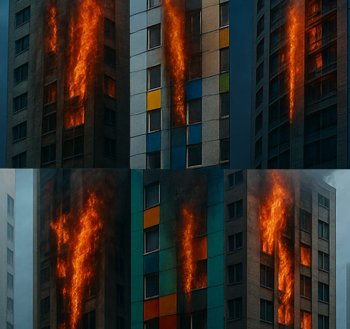Automated blinds
Contents |
[edit] Introduction
Automated blinds (or smart blinds) are window treatments that are operated by a motor situated within the roller mechanism. The motors can be wired, battery or solar powered, and the blinds can be adjusted by switch or remote control. They can also be wired directly into an integrated building automation system in large scale applications or controlled by systems such as Amazon Alexa or Google Home voice controls in small scale applications.
[edit] Energy management applications
Automated blinds can be used in conjunction with daylight systems designed to optimise natural lighting. The automated blinds can be programmed to work with sensors that measure natural lighting levels so the blinds are automatically repositioned as sunlight levels increase or decrease. Automated blinds can coordinate with automated lighting systems that respond to sunlight levels to create an integrated and efficient approach.
The blinds can be programmed to respond to natural temperature fluctuations that occur when excessive levels of sunlight create unwanted solar gain or an increased demand for cooling. When specific temperatures are reached, the blinds can automatically respond in a manner that supports heating and cooling targets. They can also be raised automatically when interior temperatures are low so that warmth from the sun can be allowed to enter.
These capabilities can be particularly valuable in spaces with tall windows, windows positioned well above the floor, or south facing windows.
[edit] Remote controls
Remote controls on automated blinds allow users to make adjustments more easily. For example, installations can be programmed to work through mobile phone apps.
This allows users to adjust the blinds for lighting levels, solar gain, glare and privacy based on their individual needs and preferences. Apps also make it possible for users to enhance security by operating blinds remotely or on timers.
[edit] Related articles on Designing Buildings Wiki
Featured articles and news
Government consultations for the summer of 2025
A year of Labour, past and present consultations on the environment, the built environment, training and tax.
CMA competitiveness probe of major housing developers
100 million affordable housing contributions committed with further consultation published.
Homes England supports Greencore Homes
42 new build affordable sustainable homes in Oxfordshire.
Zero carbon social housing: unlocking brownfield potential
Seven ZEDpod strategies for brownfield housing success.
CIOB report; a blueprint for SDGs and the built environment
Pairing the Sustainable Development Goals with projects.
Types, tests, standards and fires relating to external cladding
Brief descriptions with an extensive list of fires for review.
Latest Build UK Building Safety Regime explainer published
Key elements in one short, now updated document.
UKGBC launch the UK Climate Resilience Roadmap
First guidance of its kind on direct climate impacts for the built environment and how it can adapt.
CLC Health, Safety and Wellbeing Strategy 2025
Launched by the Minister for Industry to look at fatalities on site, improving mental health and other issues.
One of the most impressive Victorian architects. Book review.
Common Assessment Standard now with building safety
New CAS update now includes mandatory building safety questions.
RTPI leader to become new CIOB Chief Executive Officer
Dr Victoria Hills MRTPI, FICE to take over after Caroline Gumble’s departure.
Social and affordable housing, a long term plan for delivery
The “Delivering a Decade of Renewal for Social and Affordable Housing” strategy sets out future path.
A change to adoptive architecture
Effects of global weather warming on architectural detailing, material choice and human interaction.
The proposed publicly owned and backed subsidiary of Homes England, to facilitate new homes.
How big is the problem and what can we do to mitigate the effects?
Overheating guidance and tools for building designers
A number of cool guides to help with the heat.
The UK's Modern Industrial Strategy: A 10 year plan
Previous consultation criticism, current key elements and general support with some persisting reservations.
Building Safety Regulator reforms
New roles, new staff and a new fast track service pave the way for a single construction regulator.

























